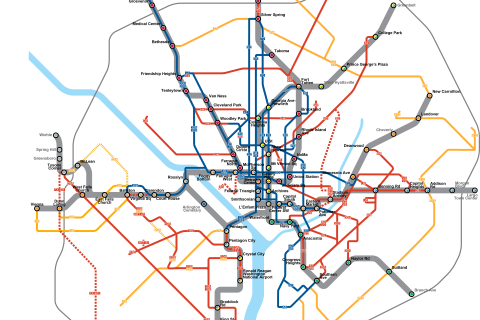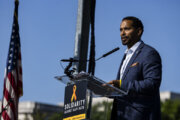WASHINGTON — Once Metro’s current era of round-the-clock track work is done, more could be on the way to deal with other issues beyond the most basic track safety.
“We won’t see as aggressive a track surge program moving forward on the track side; we feel we’ll be going back into regular work that we’ve been doing under our non-service hours, our weekend … diversions, but track surges could be used in other areas of the capital program and things like that,” Chief Operating Officer Joe Leader said.
The first 15 work zones are focused on basic issues like rail ties, fasteners and some power issues.
“I think there’s going to be an increase in reliability at the end of this,” Metro Board Chairman Jack Evans said.
Metro does not yet have a measure of how the already-completed surge zones have impacted service in the weeks or months since they ended.
“This system is a wreck, and every time we go out there we find cracks in tracks, we think we’ve repaired something and then something breaks,” Evans said. “It’s going to take a while. It’s going to take a long time to get this fixed.”
While he said he was just “talking off the top” of his head, Evans suggested Metro riders could be facing several years of heavy track work.
“At the end of this exercise, whether it’s a year, two years, three years from now, Metro will be a safe, reliable system, and the riders will come back because as this region gets more and more congested, there is no doubt in my mind the best way to get around is on Metrorail,” Evans said.
Service hour cuts separate issue
There could soon be fewer hours to use the system, in addition to other possible service cuts or fare increases next year.
A public hearing Thursday at Metro headquarters will provide riders, business owners and community members the opportunity to speak out on General Manager Paul Wiedefeld’s plan to close the system for eight more hours each week. There are several options on the table for the Metro Board to consider in December, including various cuts to night and weekend service.
“I want to increase ridership, I want to increase service — that’s where we want to be, but we have to be safe first,” Wiedefeld said this week.
District Department of Transportation Director Leif Dormsjo has dubbed the service cuts “SafeTrack 2”. He asked Leader at a Metro Board committee meeting Thursday what more Metro would actually get done if the system was closed for longer periods.
Leader suggested Metro could do more preventive maintenance and regular work but would still require evening and weekend single-tracking and other additional track work periods, as well as the longer 24/7 work zones for more significant repairs and replacements.
In Leader’s view, the early closings are a way for Metro to finally do proper preventive maintenance.
Opponents of the cuts to service hours worry about the impact on businesses and workers who need to get home, many of whom have felt the impact from Wiedefeld’s decision this spring to start closing the system at midnight on Fridays and Saturdays.
His authority for the “temporary” service change, which includes a ban on early openings for races or late closings for playoff games, expires at the end of May.
While Wiedefeld initially described his plan for service hour cuts as “permanent,” this week he changed his tone slightly.
He told reporters he believes Metro could be in a position by July 2018 to reconsider any changes to hours that take effect next summer.







